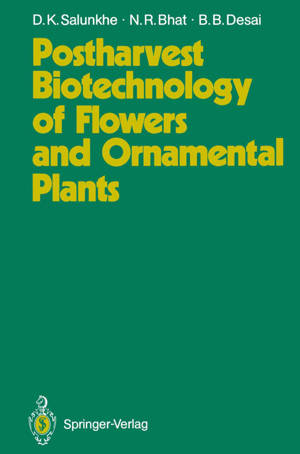
- Afhalen na 1 uur in een winkel met voorraad
- Gratis thuislevering in België vanaf € 30
- Ruim aanbod met 7 miljoen producten
- Afhalen na 1 uur in een winkel met voorraad
- Gratis thuislevering in België vanaf € 30
- Ruim aanbod met 7 miljoen producten
Zoeken
Postharvest Biotechnology of Flowers and Ornamental Plants
Dattajirao K Salunkhe, Narayana R Bhat, Babasaheb B Desai
Paperback | Engels
€ 52,95
+ 105 punten
Omschrijving
The floricultural industry has been undergoing an unprecedented revolu- tion in terms of the type of commodity produced and the production and marketing technology in both developed and developing countries. As a result of this revolution, as we know today, there is a flower for every purpose and for every person in the world, as is evident from the slogan of the Society for American Florists: "say it with flowers". In re- cent years, the Latin American and European countries have become sizeable competitors for the North American fresh flower markets and the trend continues growing. Like any other crop production, floricultural production can be divided into three basic factors: (1) production costs (2) quality (3) transportation costs. All these must be optimum for this area or industry to be safe from competition. With increasing consumer awareness and the current recession, the pressure from the artificial floral products in- dustry and also of neighbouring countries on the American fresh flower industry, and continued competition even amongst the growers, whole- salers and retailers, quality in floricultural industry is becoming increas- ingly important to all those concerned with handling these products. The visual quality aspects of the product are the sole determiner of consumer acceptability in this industry and, unlike fruits and vegetables, flowers cannot be marketed by just discarding the damaged portion.
Specificaties
Betrokkenen
- Auteur(s):
- Uitgeverij:
Inhoud
- Aantal bladzijden:
- 192
- Taal:
- Engels
Eigenschappen
- Productcode (EAN):
- 9783642738050
- Verschijningsdatum:
- 16/01/2012
- Uitvoering:
- Paperback
- Formaat:
- Trade paperback (VS)
- Afmetingen:
- 156 mm x 234 mm
- Gewicht:
- 299 g

Alleen bij Standaard Boekhandel
+ 105 punten op je klantenkaart van Standaard Boekhandel
Beoordelingen
We publiceren alleen reviews die voldoen aan de voorwaarden voor reviews. Bekijk onze voorwaarden voor reviews.











